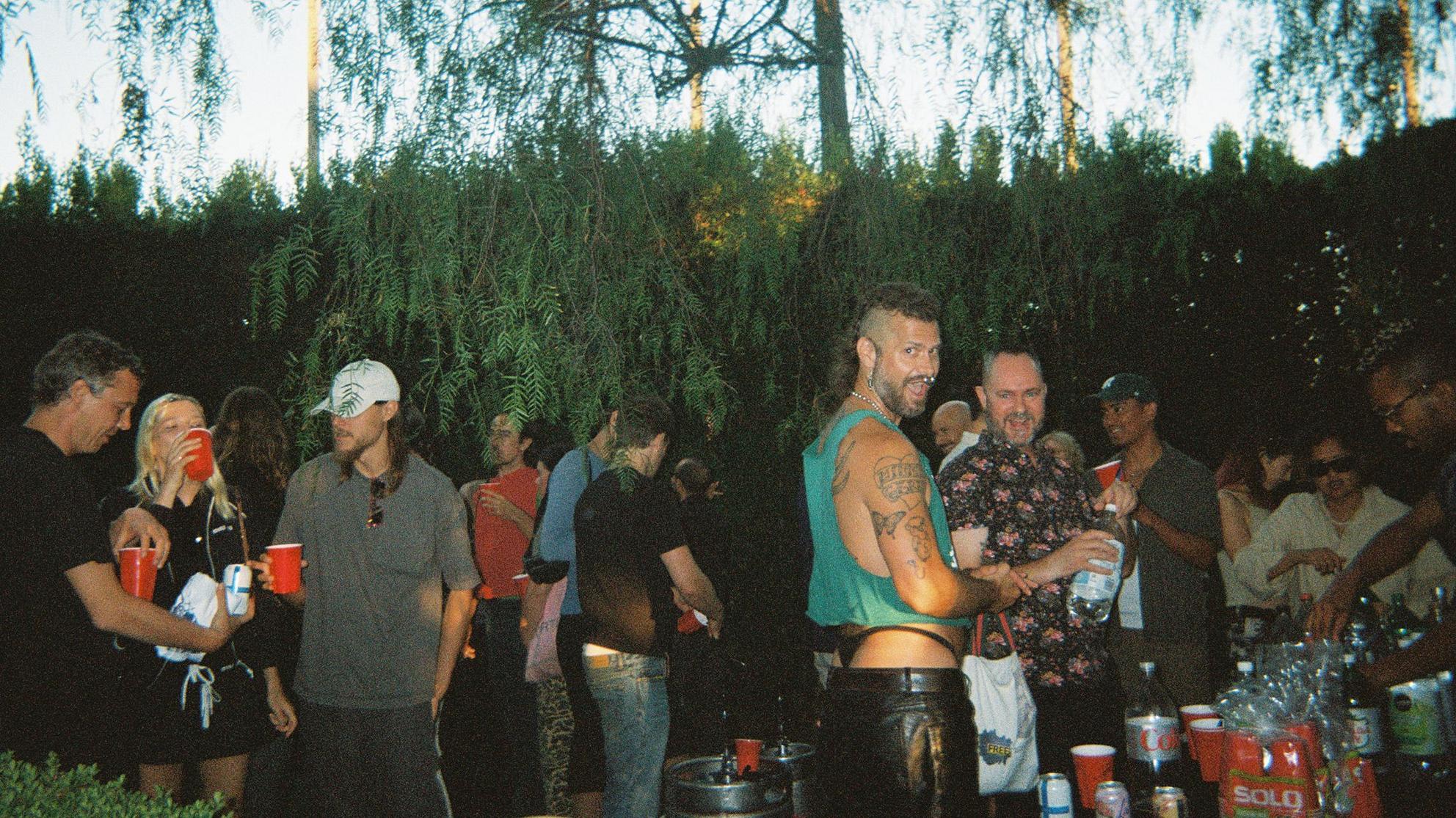BANANA REPUBLIC/FRATRICIDE
Tom of Finland House
Los Angeles
Aug. 22, 2024
The Tom of Finland House is separated from Laveta Terrace by a tall green hedge. It’s not immediately clear whether this is to shield the outside world from what is going on inside or the inside world from what is going on without. Either way, whenever I come to the House, I feel as though I’m passing through a membrane to another universe. Butch lesbians roam in button-ups or harnesses, a given individual simultaneously sports a beard and a visible thong, top surgery scars flash through the open sides of DIY muscle shirts, and — like a cherry on top — a jacked man clad in dark leather vest, shorts, and canine muzzle-mask searches for a master.
Some context, for the uninitiated: Tom of Finland was, in fact, born in Finland, as Touko Valio Laaksonen. He studied advertising in Helsinki and began to privately draw male erotica. His experiences during World War II sparked a long fetish with military uniforms, especially those of the German Wehrmacht. In the 1950s, Laaksonen began to submit his drawings to magazines, which ironically flourished under censorship codes that outlawed the depiction of “overt” homosexuality. When male nudity was decriminalized during the 1970s, Laaksonen began to achieve mainstream success and the ability to live off his art. In 1984, Laaksonen and friend/businessman Durk Dehner co-founded the Tom of Finland Foundation to preserve his legacy — and the rest is, as they say, history.
One of the Tom of Finland House’s signature initiatives is its artist-in-residence program. I find myself there on a late August night for the dual event Banana Republic/Fratricide, offered by current artists-in-residence Yun-Pei and Gray Wielebinski, respectively. Although both have projects on display, the centerpiece of the evening is a quartet of readings by Asa Seresin, Harry Tafoya, Luis Ortega Govela, and Ana Howe Bukowski.
Seresin begins with an excerpt from a book in progress that analyzes gender transgression as social phenomenon rather than discrete class, calling our attention to such ostensibly mundane traditions as high school “Dress as Your Type” days. Tafoya offers a short essay that feels almost site-specific on the proliferation of the “Nazi” moniker and the complicated trajectory of National Socialism across the homosphere. Architect Ortega Govela examines the built environment of Massachusetts gay village Provincetown, contrasting it with the perhaps more well-known Fire Island Pines, New York, and considering its place in a certain vision of “America.” Bukowski gives us a preview from their contribution to a forthcoming magazine that approaches the venerable pastime of “Axe bombing” through the lens of chemical warfare, deftly — and hilariously — weaving political history and personal biography.
The readings both inform and are informed by the practices of Wielebinski and Yun-Pei. Wielebinski has appropriately devoted his time at Tom of Finland House to researching another experiment in sexualized communal living: the fraternity house. Tonight, several massive paddles plastered in naked men, female bodybuilders, and puppies stand as testament to this particular creative interest. (Anyone wishing to use them to replicate the hazing ritual with which they are associated must sign a legal waiver.) In a small room to the left of the entrance, Yun-Pei presents a body of work that uses video and painting to explore the intersections of race and sexuality. As darkness falls upon this queer oasis, Sevyn 0000 takes to an impromptu DJ booth in front of which the readings had concluded shortly before. Friends goad one another to do keg stands on one of the two beer receptacles begging to be used for the purpose. The whole affair feels like a college party but much better, mostly because it is much, much gayer.






